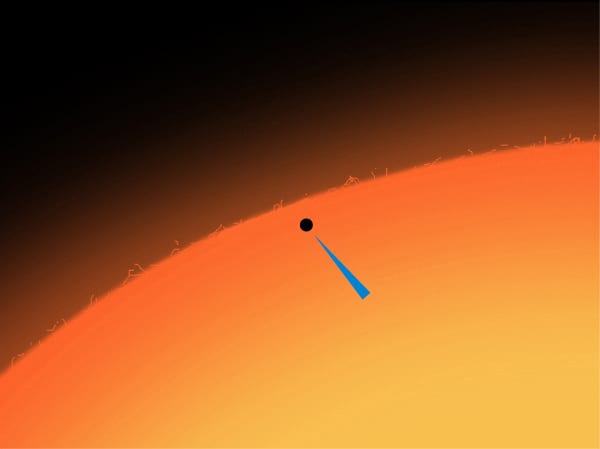
 A transit of mercury coming soon!
A transit of mercury coming soon!
As we say goodbye to April 2016, we can look forward to a few special events coming up in May.
Mothers’ Day, in case you forgot, is right around the corner on May 8th. Then there’s Victoria Day arriving this year on May 23rd; and if you’re Nepalese, you’ll likely be celebrating the Buddha’s birthday in a couple of weeks on May 14th.
But for astronomy fans, May 9th will also be notable as the day when Mercury’s orbit passes between the Sun and the Earth. A fairly rare occurrence -it happens only about 13 times each century- the transit of Mercury will be visible by telescope as a tiny black dot traveling across the face of the sun.
This event, however, comes with a warning: do not look directly at the sun. Use only instruments with specially designed filters for viewing the sun (solar telescopes, eclipse glasses) in order to avoid serious and permanent eye damage.
Mercury’s orbit around the sun takes only 88 days, and the planet actually passes between the Sun and Earth every 116 days but because of the tilt of its orbit, Mercury most often appears in the sky either above or below the Sun. The last solar transit for Mercury took place in 2006.
Historically, Mercury’s proximity to the Sun has made it more difficult to study than the other planets, but in 2011, the NASA spacecraft Messenger reached the red planet and spent the next three years in orbit, mapping the planet and sending back amazing images of Mercury’s cratered surface.
Scientists are still mining the data delivered by the Messenger spacecraft, which ended its mission one year ago on April 30, 2015, by crashing onto Mercury’s surface after running out of fuel reserves. Recently, a study published by researchers at the Applied Physics Laboratory at Johns Hopkins University (the same lab where Messenger was built) confirmed a high concentration of carbon on Mercury’s surface, responsible for the planet’s dark complexion.
Researchers believe the source of the carbon to be an ancient graphite-rich crust buried within the planet which has been brought to the surface as a result of meteor impacts.
Named after the Greek god of travel and communication, Mercury’s activity is closely followed by astrologists, too. For most of May, Mercury will be in retrograde, whereby its movement across the night sky will appear to us Earthlings as slower than other celestial objects, giving the illusion that Mercury is actually heading against the normal west-to-east flow of stars and planets -and thereby leading to all manner of earthly calamities. Expect friends and neighbours to be blaming their misfortunes over the next while – everything from the morning bus being late to that just-purchased stock taking a nose dive – on Mercury’s purportedly weird and nefarious behaviour.
Canadians from coast to coast will have a good view of Mercury’s transit on May 9th, and science centres across the country are going to be opening their doors to the public to come and take a look (through their telescopes fitted with solar filters, of course). Alternatively, the transit can also be viewed online.
Leave a Reply
You must be logged in to post a comment.




 Share
Share Tweet
Tweet Share
Share




Comment